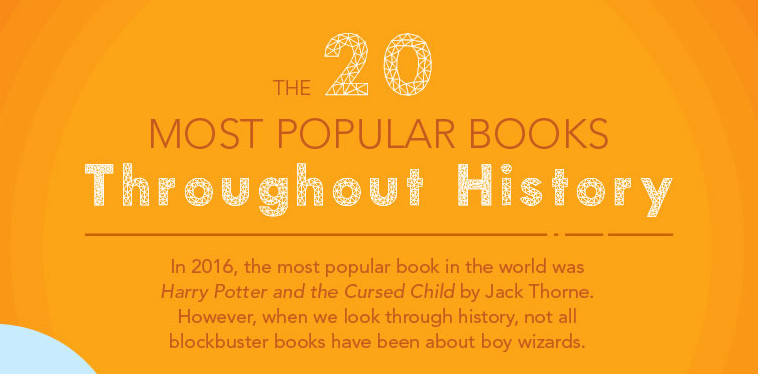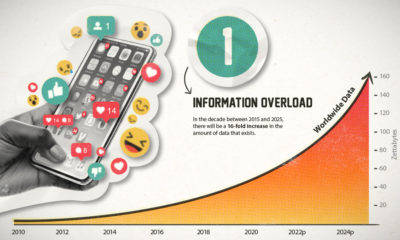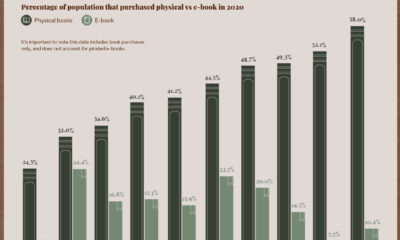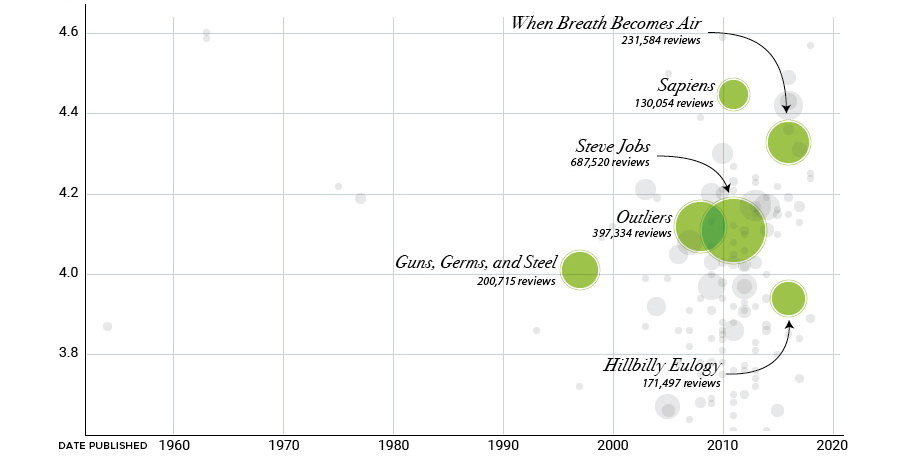Misc
The Most Popular Books in History All Shared One Trait
Throughout history, people have turned to works of literature for guidance, entertainment, and education. Modern businesses aim to tell stories that leave a long-lasting impact as well, and should look to examples of historical success to influence how they create their own content.
Today’s infographic comes to us from Global English Editing, and it looks at 20 of the most popular books in the world. All of the books listed, even those published decades or centuries ago, have made an enduring impact on readers to this day. They have achieved this by stirring discussion and sparking debate wherever they are read.

Controversy: The Evergreen Theme
One of the important traits shared by every book on this list is the controversy that has swirled around each of them. This can be seen across different time periods and genres.
People have questioned the identity and authorial authenticity of Homer and decried the upending of creationism proposed by Darwin. Even a children’s book like the modern bestselling series, Harry Potter, can be a magnet for discussion over what is morally right and wrong.
It is often the case the that most popular and enduring literary works will not only captivate, but also address controversial issues in such a way that people will be talking about them for generations.
Lessons From History
The recent bestselling streak of George Orwell’s 1984, first published in 1950, is an interesting illustration of this trend.
The dystopian novel was banned upon its translation and release in the former USSR due to its implicit critique of Stalinist political ideology. By contrast, in the 1970s and 1980s, several American counties challenged 1984 on the grounds that it might promote communist ideals. In the 21st century, Orwell’s best-known work has been revisited by a new generation of readers as the American political climate continues to create new uncertainties about governance, the distortion of facts, and social control.
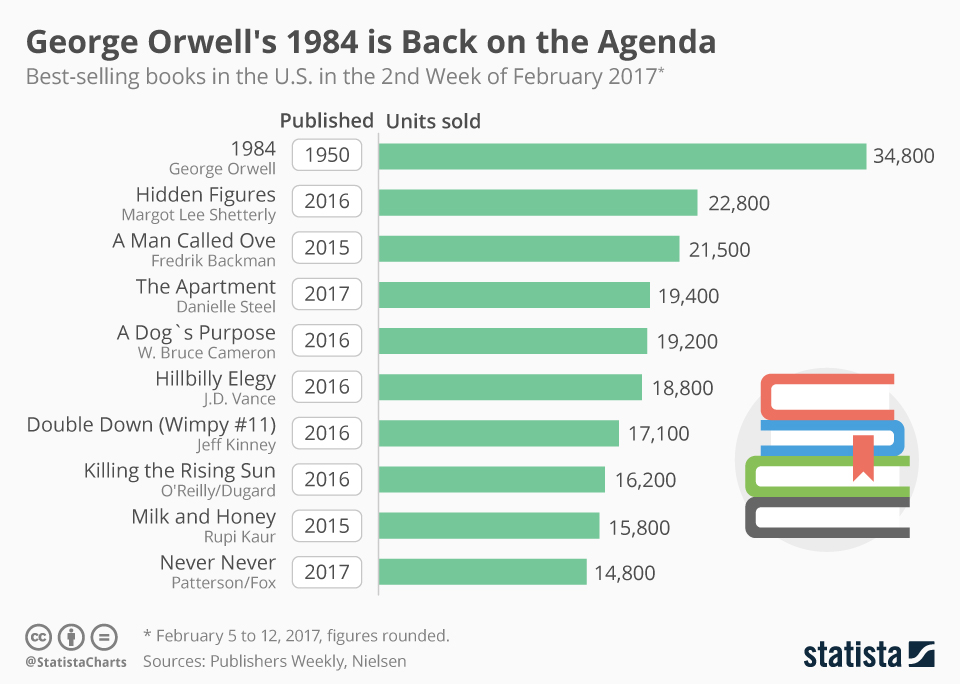
For Business Content, Bold Will Hold
The most popular books ever written can teach modern businesses a great deal about what it takes to make content that is evergreen, meaningful, and primed to engage their readers. Creating discussion is key in the age of the reactive “hot take” style of article. Your ability to stand out in the cultural, historical, or political context for having a point of view that many people find worthy of debating will give your work the staying power it needs.
Considering that within any given minute there are 2.4 million Google searches taking place and over 700,000 people logging into Facebook, this is no easy task. But whether it’s through a new product or via customer engagement, creating meaningful discussion is key to making a business’ voice heard through all the noise.
VC+
VC+: Get Our Key Takeaways From the IMF’s World Economic Outlook
A sneak preview of the exclusive VC+ Special Dispatch—your shortcut to understanding IMF’s World Economic Outlook report.

Have you read IMF’s latest World Economic Outlook yet? At a daunting 202 pages, we don’t blame you if it’s still on your to-do list.
But don’t worry, you don’t need to read the whole April release, because we’ve already done the hard work for you.
To save you time and effort, the Visual Capitalist team has compiled a visual analysis of everything you need to know from the report—and our VC+ Special Dispatch is available exclusively to VC+ members. All you need to do is log into the VC+ Archive.
If you’re not already subscribed to VC+, make sure you sign up now to access the full analysis of the IMF report, and more (we release similar deep dives every week).
For now, here’s what VC+ members get to see.
Your Shortcut to Understanding IMF’s World Economic Outlook
With long and short-term growth prospects declining for many countries around the world, this Special Dispatch offers a visual analysis of the key figures and takeaways from the IMF’s report including:
- The global decline in economic growth forecasts
- Real GDP growth and inflation forecasts for major nations in 2024
- When interest rate cuts will happen and interest rate forecasts
- How debt-to-GDP ratios have changed since 2000
- And much more!
Get the Full Breakdown in the Next VC+ Special Dispatch
VC+ members can access the full Special Dispatch by logging into the VC+ Archive, where you can also check out previous releases.
Make sure you join VC+ now to see exclusive charts and the full analysis of key takeaways from IMF’s World Economic Outlook.
Don’t miss out. Become a VC+ member today.
What You Get When You Become a VC+ Member
VC+ is Visual Capitalist’s premium subscription. As a member, you’ll get the following:
- Special Dispatches: Deep dive visual briefings on crucial reports and global trends
- Markets This Month: A snappy summary of the state of the markets and what to look out for
- The Trendline: Weekly curation of the best visualizations from across the globe
- Global Forecast Series: Our flagship annual report that covers everything you need to know related to the economy, markets, geopolitics, and the latest tech trends
- VC+ Archive: Hundreds of previously released VC+ briefings and reports that you’ve been missing out on, all in one dedicated hub
You can get all of the above, and more, by joining VC+ today.
-

 Mining1 week ago
Mining1 week agoGold vs. S&P 500: Which Has Grown More Over Five Years?
-

 Markets2 weeks ago
Markets2 weeks agoRanked: The Most Valuable Housing Markets in America
-

 Money2 weeks ago
Money2 weeks agoWhich States Have the Highest Minimum Wage in America?
-

 AI2 weeks ago
AI2 weeks agoRanked: Semiconductor Companies by Industry Revenue Share
-

 Markets2 weeks ago
Markets2 weeks agoRanked: The World’s Top Flight Routes, by Revenue
-

 Countries2 weeks ago
Countries2 weeks agoPopulation Projections: The World’s 6 Largest Countries in 2075
-

 Markets2 weeks ago
Markets2 weeks agoThe Top 10 States by Real GDP Growth in 2023
-

 Demographics2 weeks ago
Demographics2 weeks agoThe Smallest Gender Wage Gaps in OECD Countries
